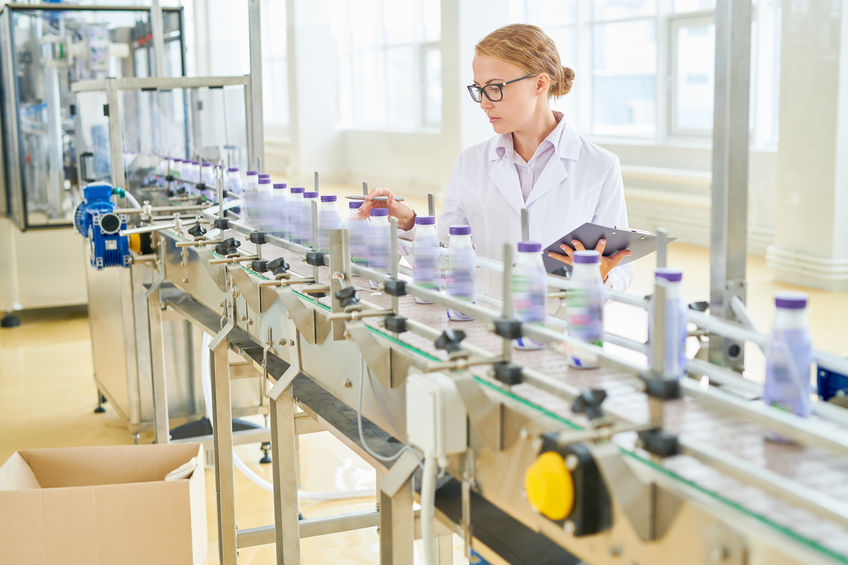Manufacturing Automation Creates New Job Opportunities
Manufacturers are constantly seeking opportunities to increase the efficiency of operations. As a result, many are adding automation in manufacturing facilities in hopes that they will experience the significant benefits of automation. However, some worry that increasing automation will affect jobs. The good news is that manufacturing automation not only optimizes facilities, but, as it enables business growth and expansion, it is likely to create better-paying job opportunities for factory employees.
This blog will discuss the benefits of automation, as well as the potential impact of automation on employment.

Automation in Manufacturing
Manufacturing automation is the integration of automated and robotic equipment, controls and connectivity technologies that enable facilities to operate with high levels of efficiency in an effort to streamline production, raise throughput, boost quality and improve facility safety.
The four most significant benefits of automation installations are as follows:
- Increased efficiency: Manufacturing automation increases efficiency as automated equipment, such as robots, can perform tasks with higher levels of speed and precision than is possible with manual labor. The high speeds help increase throughput and productivity, while also boosting quality as automated equipment is programmed for repeatable precision. Combining high speeds with accuracy and repeatability streamlines production, minimizes defects and reduces costs associated with inefficiencies.
- Improved throughput: Because automated equipment can run continuously without becoming fatigued or taking breaks, the addition of automation in manufacturing increases overall productivity and enables greater levels of throughput from the same manufacturing line.
- Better quality control: Manufacturing automation ensures high levels of quality because automated equipment and robots are programmed to precisely and repeatedly carry out a task. This eliminates quality issues that are related to human error and variations in the way a product is assembled or a task is managed by individual workers. In addition, automated inspection equipment can be used for quality control purposes and proper programming will allow it to identify more faulty products and quality issues than would be detected by the human eye.
- Enhanced safety record: Applying automation in manufacturing facilities reduces the risk of accidents or injuries that can occur when human workers perform tasks that result in repetitive motion injuries or those in hazardous areas. Automating high-risk duties and processes located in hazardous areas reduces workplace accidents and the associated costs, while also improving the overall safety record of the facility.
Automation and Jobs
Despite the benefits of automation, the increase in automation in manufacturing has created a fear that automation will kill jobs. However, many experts theorize that automation can drive such impactful levels of efficiency that manufacturing businesses are apt to expand, in turn creating new positions that are likely to pay a higher wage.
As a matter of fact, a study published by MIT and Boston University determined that the negative impact of automation on jobs can be offset as “all technologies create productivity effects that contribute to labor demand.”
Many experts view the potential for a positive impact on the workforce as such: As a manufacturing facility installs automation, it will likely increase its productivity, allowing the business to produce and sell more product, leading to eventual expansion. While the employee who previously had a low-paying, unskilled factory floor job may be replaced by a robot, that worker’s position of manually operating a piece of equipment, could potentially be transitioned, to a higher-skilled, higher-paid role that requires tending new automated technologies, supervising the line or using problem-solving skills to manage logistics or operations. There may also be more opportunities to program, repair and maintain automated equipment.
Managing the Impact of Automation on Employment
While the increase in efficiency due to automation does have the potential to create more business expansion opportunities and, with it, higher-paid industrial automation jobs, the real impact of automation on manufacturing jobs depends on how the transition and opportunities are managed by each company.
For example, realistically not all low-skill jobs will transition to high-skilled employment opportunities; however, employees can be given training to provide them with the knowledge they need to succeed and thrive at tech-driven positions being created by manufacturing automation, thus reducing the negative impact of automation on manufacturing jobs.
This claim is supported by a World Economic Forum study that suggests that by 2025, digital technologies will create at least 12 million more jobs than they eliminate as industry will rely on workers with the right skills to program, maintain and repair automated equipment.
Other positive benefits of automation and how it impacts the workforce should not be overlooked. For example, by redeploying or transferring workers to serve other production needs or upskilling them to serve specialized technical or supervisory roles, it creates opportunities to improve worker safety as it reduces the need to send manual laborers into hazardous or dangerous environments. In addition, eliminating activities such as standing, bending and lifting from manufacturing job requirements may provide more opportunities for manufacturers to hire disabled or older people for factory roles, creating positions for members of the workforce who may have been unable to perform pre-automation tasks.
Automation Opportunities
When automation and robots handle previously manual tasks, it streamlines and optimizes operations, increases throughput and productivity and improves product quality and safety, allowing manufacturers to increase profitability and expand their market share, which may encourage the creation of higher-skilled, higher-paying industrial automation jobs for previously unskilled, low-wage laborers. With proper management and training, manufacturing automation and human workers can coexist in a world where automated equipment brings high speeds and efficiency to the factory floor and human employees bring problem-solving, complex thinking and creativity to the table, both of which boost the bottom line and add value to the company.
For more information on how manufacturing automation can benefit both profitability and the workforce, please contact JHFOSTER to learn about automation opportunities.
